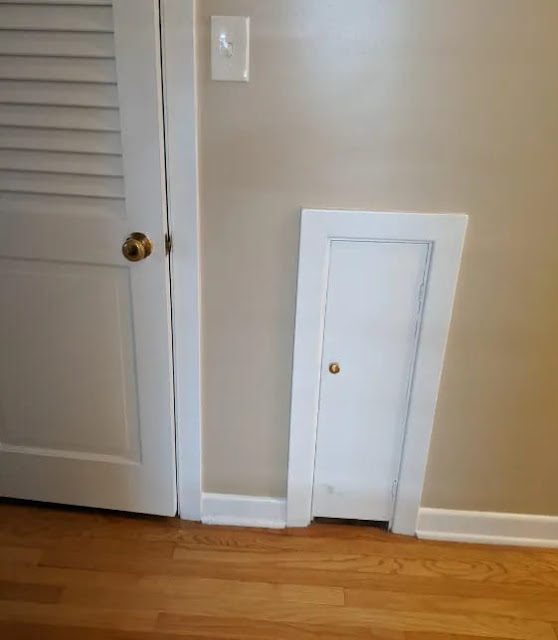If you’ve ever explored an older home built before the 1950s, you’ve probably come across a small closet door. These small doors have been a source of curiosity and speculation for many owners and history buffs. What were they for? Why were they embedded in the walls? In this article, we are going to reveal the truth behind these mysterious little doors and reveal their true purpose.
A common misconception about these small doors is that they were created as secret passages or hiding places. The idea of hidden rooms and secret activities adds an air of mystery to these ancient homes, but the reality is much more mundane. Many people also think that this door hides storage space for bags. It makes sense to put it near the closet. However, the space seems quite small for a large suitcase, especially since the older ones don’t have wheels. Other frequently suggested possibilities are to store linens or to have space for an ironing board. But the truth is that small doors were not designed for secret purposes, but rather had a practical function in the fifties and sixties.
The real purpose of these small doors was to provide additional storage space, especially for a chart table. By the middle of the 20th century, card games were a popular form of entertainment in many homes. Families and friends get together to play games like bridge, poker or rummy. However, chart tables can be bulky and take up a lot of space when not in use. To solve this problem, ingenious designers came up with a clever solution – the micro door.
Behind these seemingly inconspicuous doors, owners can stow folding chart tables. Doors were usually large enough to accommodate the dimensions of the table and were placed strategically in convenient locations, such as next to a closet or in a hallway. This allowed families to keep their card tables out of sight when not in use, saving valuable space in their homes.
So even though the small doors don’t lead to hidden treasures or secret passageways, they offer insight into the way of life and priorities of a bygone era. They reflect the ingenuity of designers who sought to maximize space and create functional living environments for homeowners.
Despite their original purpose, these small doors have become a treasured part of many older homes. They evoke a sense of nostalgia and curiosity, reminding us of the days when card games were a popular pastime and brought families together around the table for hours of entertainment. It also serves as a tangible link to the architecture and design trends of the 1950s and 1960s.
If you own an older home with one of these small doors, consider preserving it as part of the property’s historic charm. Although you don’t have a card table to store, you can reallocate the space for other storage needs. A small door can hold extra linens, cleaning supplies, or even serve as a small storage space for non-perishable items.
The small doors found in older pre-1950s homes may not lead to secret rooms or hidden passageways, but they serve a practical purpose. Originally a storage space for game tables, these doors reflect the ingenuity and resourcefulness of 1950s and 1960s designers. Whether you own an older home with one of these doors or just find them fascinating , they are a tangible link to the past and add a unique charm to any home.






